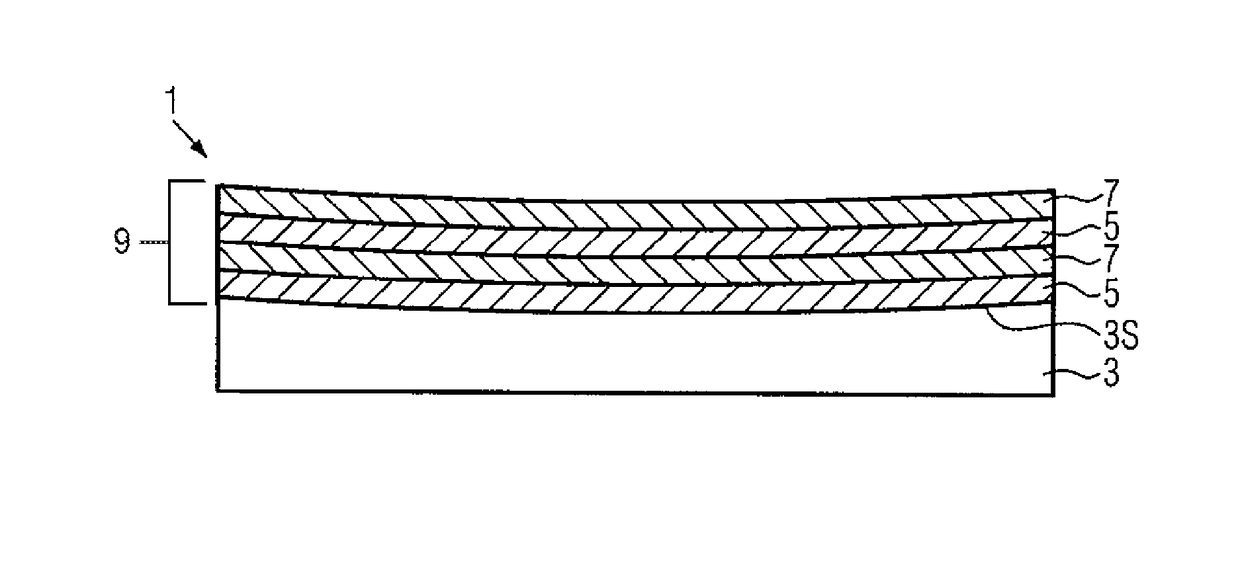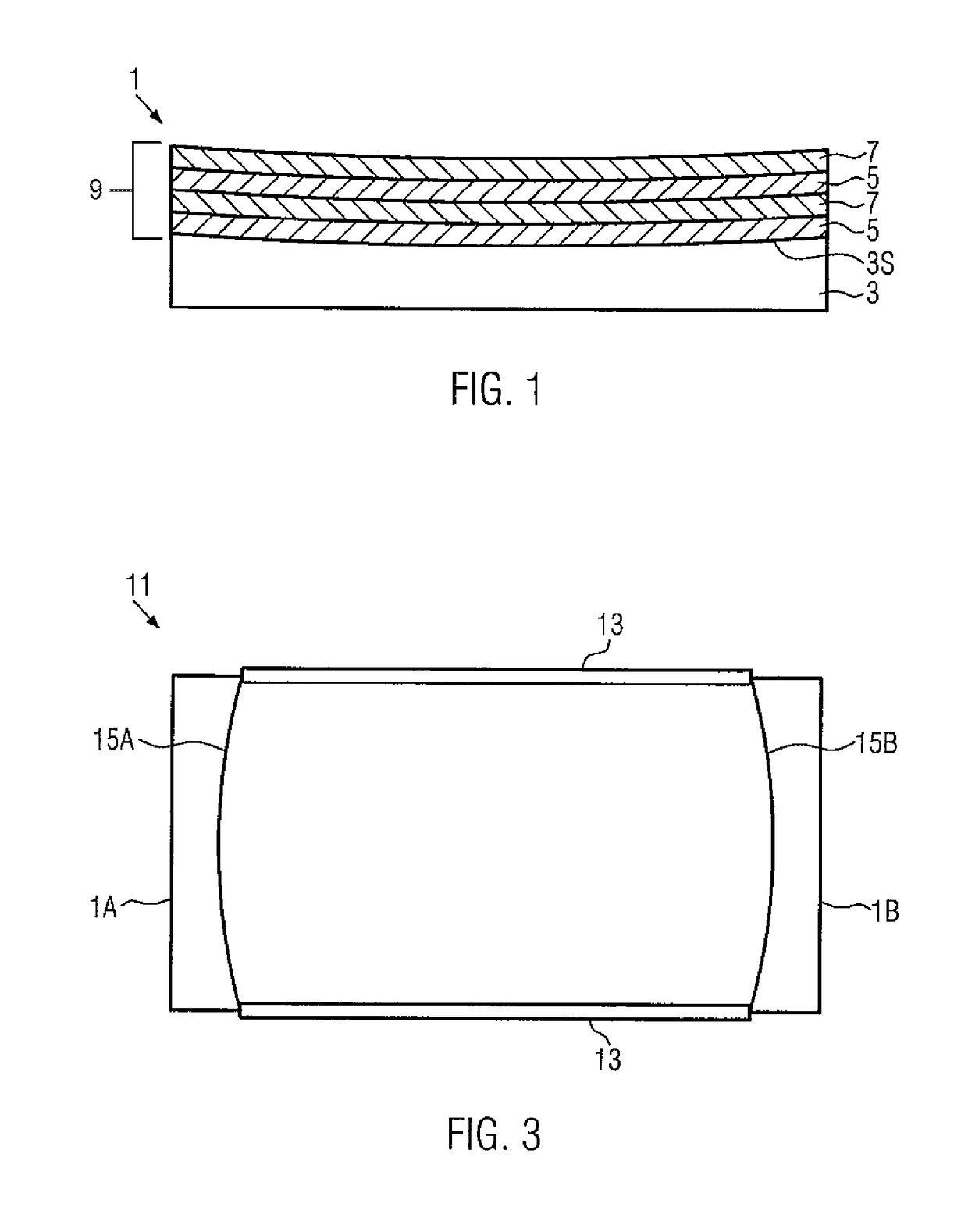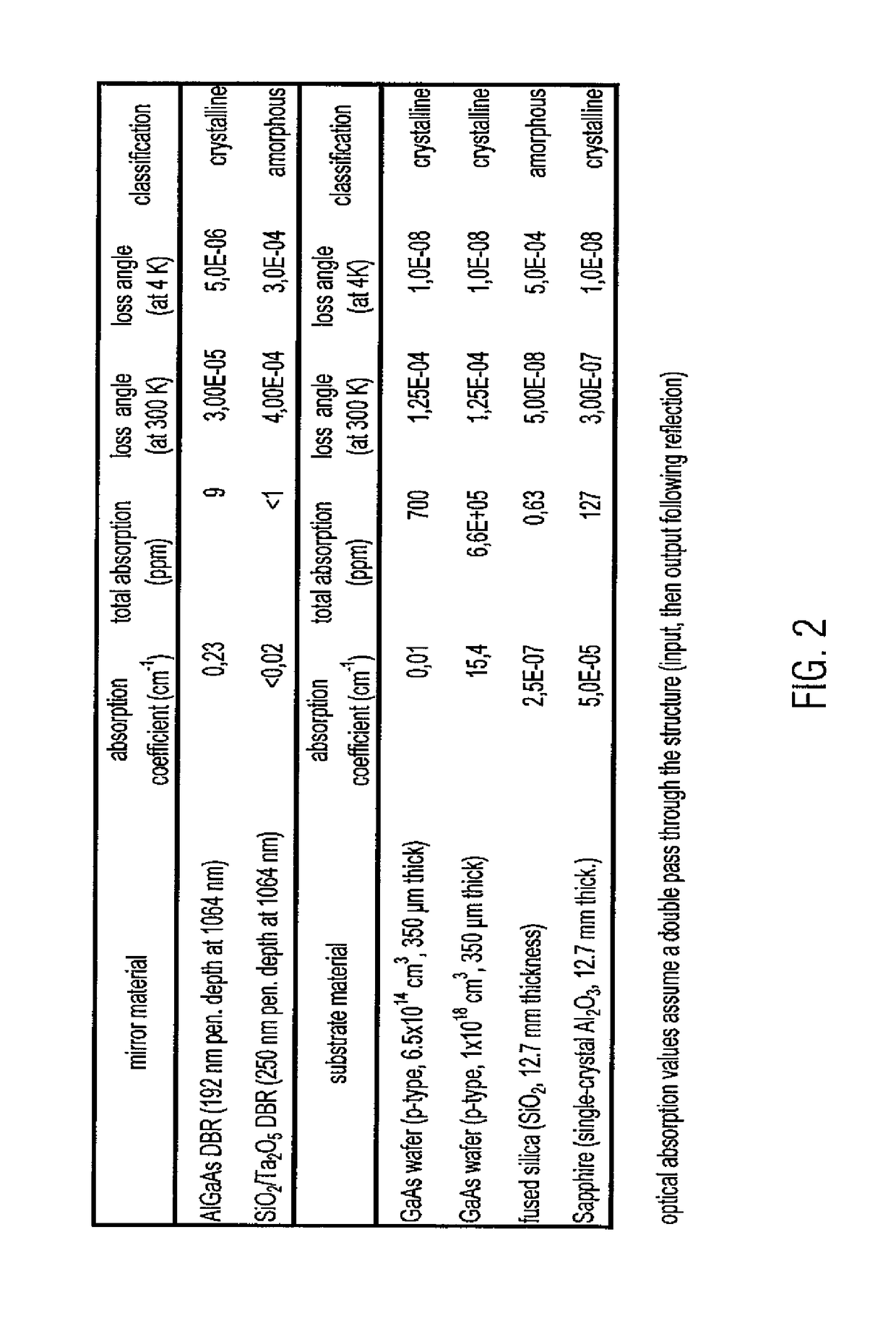Substrate transferred monocrystalline bragg mirrors
a monocrystalline bragg mirror and substrate technology, applied in the direction of mirrors, semiconductor devices, instruments, etc., to achieve the effect of reducing the mechanical damping in the mirror materials
- Summary
- Abstract
- Description
- Claims
- Application Information
AI Technical Summary
Benefits of technology
Problems solved by technology
Method used
Image
Examples
Embodiment Construction
[0040]FIG. 1 shows a side view of a low absorption mirror assembly according to the present invention.
[0041]The stack comprises a monocrystalline Bragg mirror bonded to a curved carrier substrate. As described previously, in this application the term monocrystalline refers to a low defect density single-crystal film as can be produced via epitaxial growth techniques, MBE, MOVPE, LPE, etc. In this document crystalline and monocrystalline may be used interchangeably. The mirror assembly 1 of FIG. 1 is only schematically depicted. A curved substrate 3 is provided as the carrier substrate for a stack of monocrystalline layers. The stack 9 of layers 5 and 7 is depicted in a simplification with only four layers, it should be understood, however, that the stack 9 typically comprises many more layers. The maximum reflectivity may be determined by the total number of layers—asymptotically approaching a reflectivity value of 100%. The number of layers for the present example may be about 40 p...
PUM
| Property | Measurement | Unit |
|---|---|---|
| thickness | aaaaa | aaaaa |
| wavelength | aaaaa | aaaaa |
| wavelength | aaaaa | aaaaa |
Abstract
Description
Claims
Application Information
 Login to View More
Login to View More - R&D
- Intellectual Property
- Life Sciences
- Materials
- Tech Scout
- Unparalleled Data Quality
- Higher Quality Content
- 60% Fewer Hallucinations
Browse by: Latest US Patents, China's latest patents, Technical Efficacy Thesaurus, Application Domain, Technology Topic, Popular Technical Reports.
© 2025 PatSnap. All rights reserved.Legal|Privacy policy|Modern Slavery Act Transparency Statement|Sitemap|About US| Contact US: help@patsnap.com



